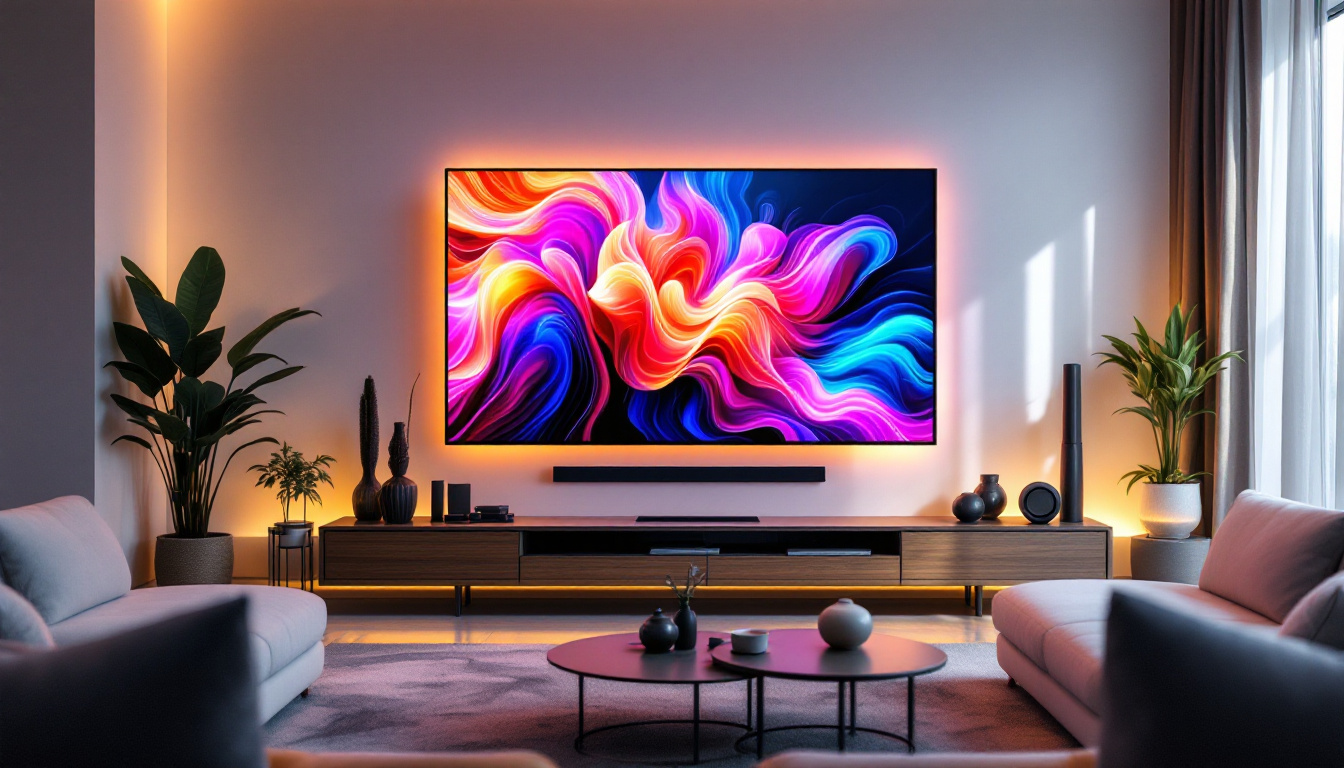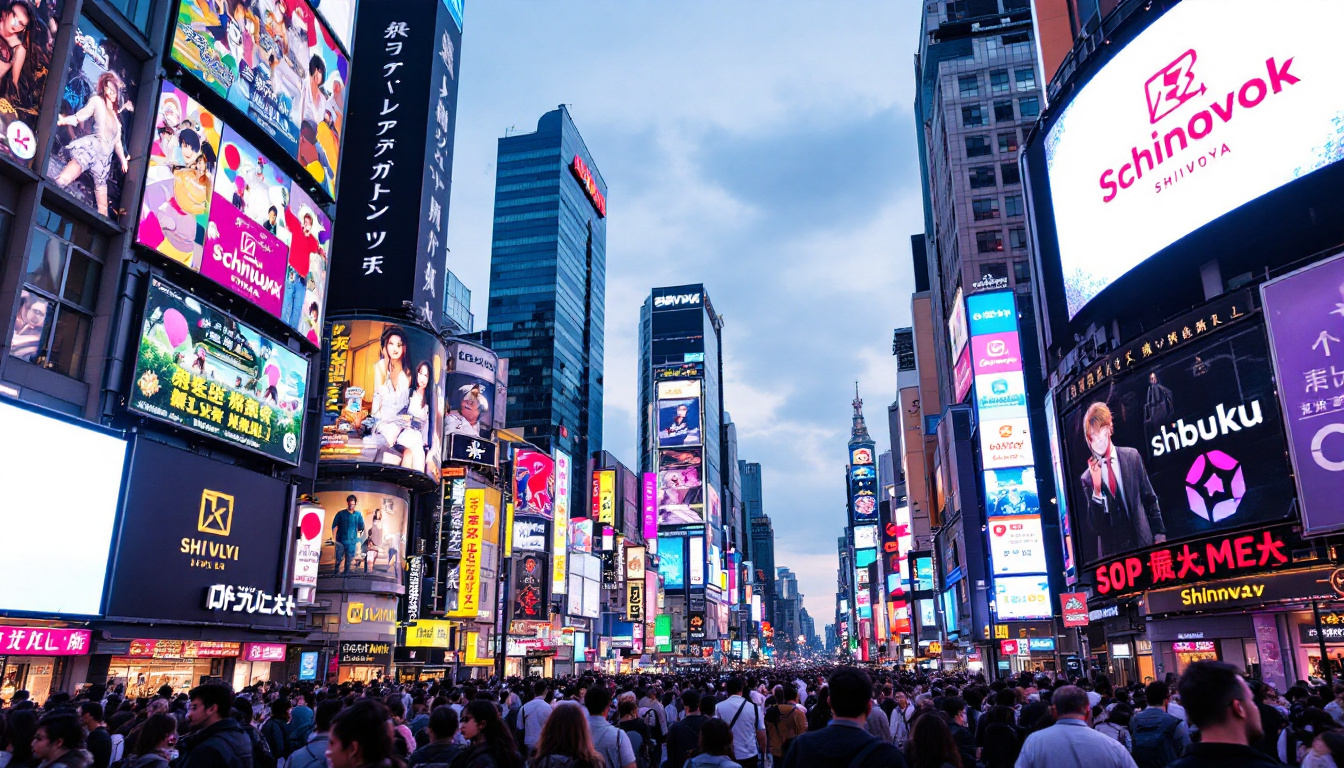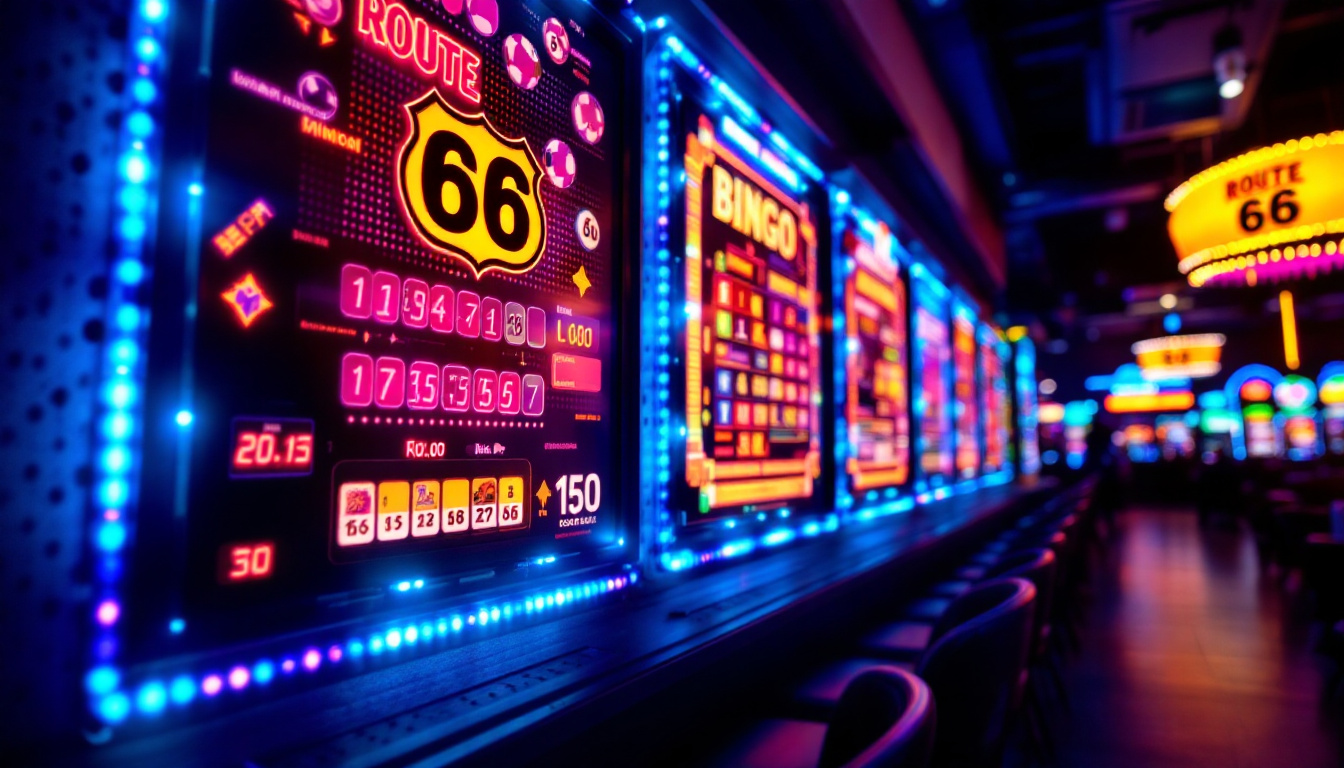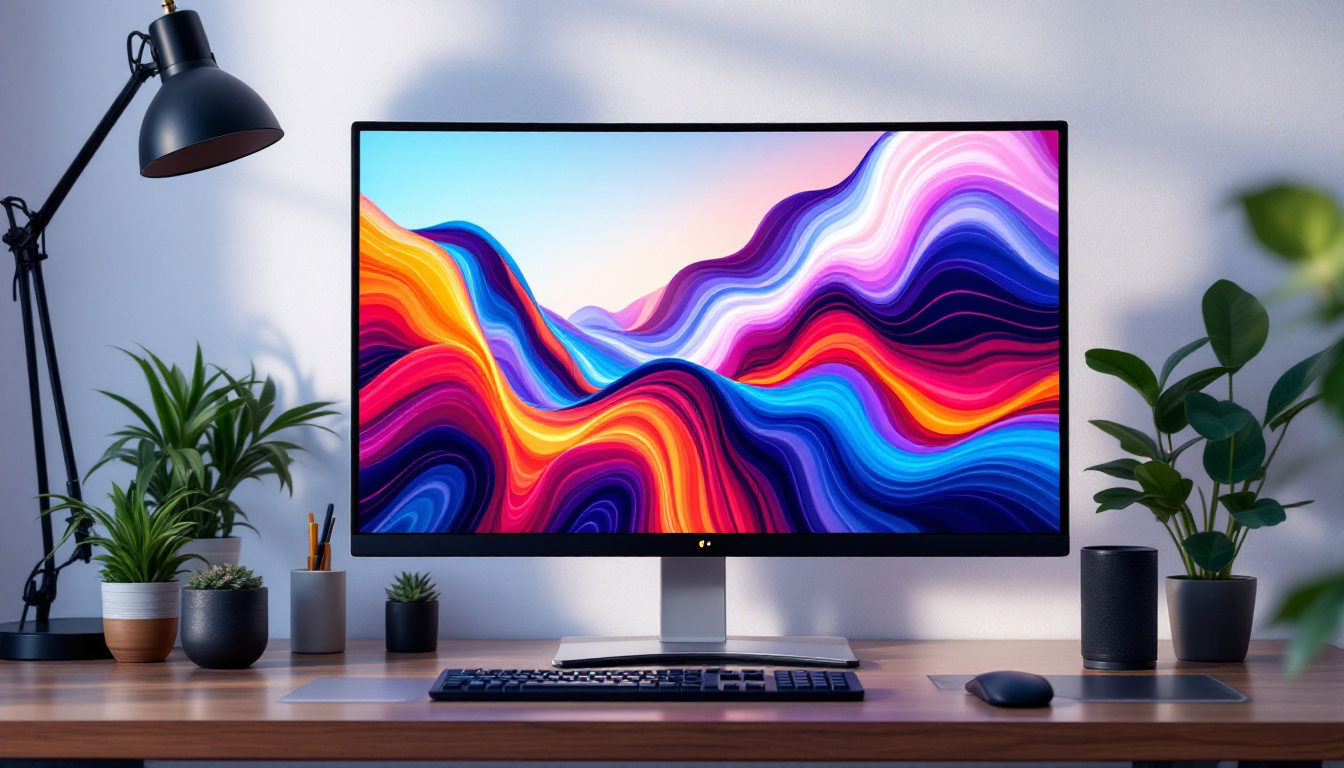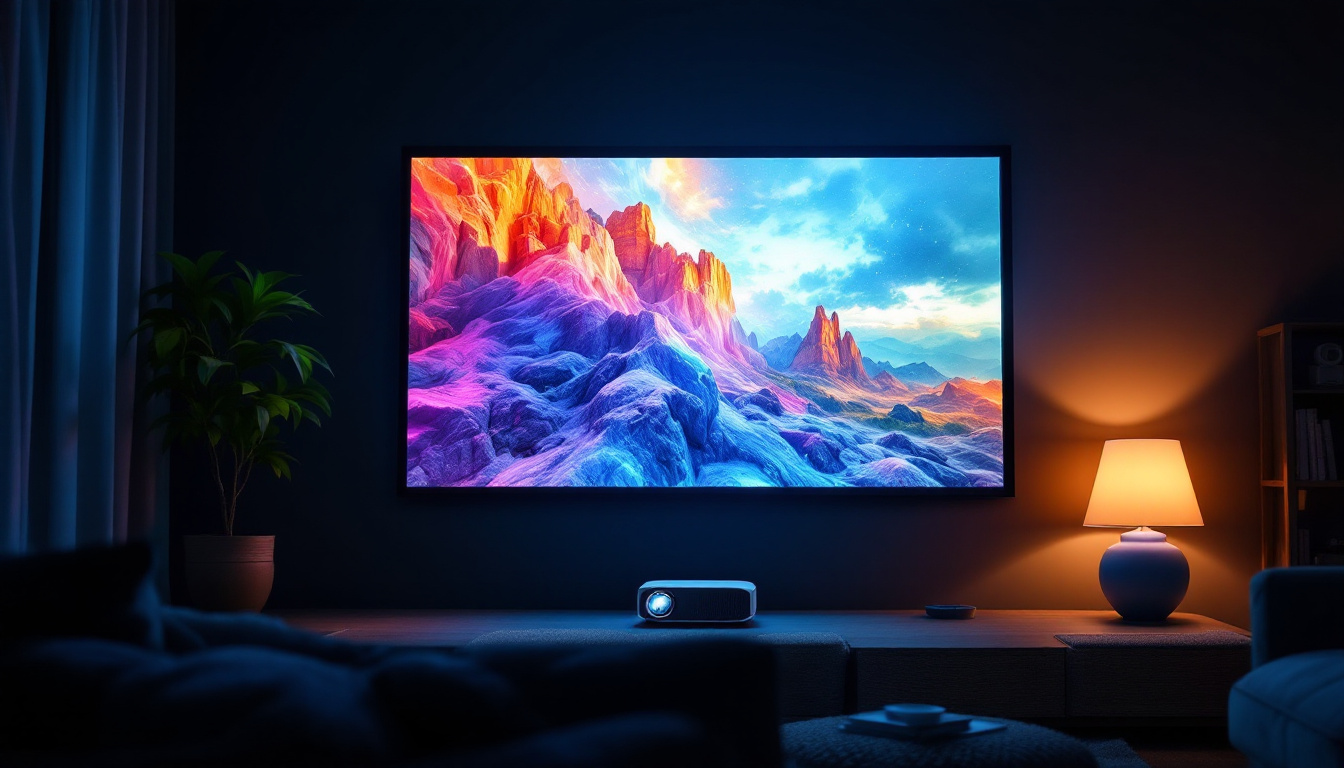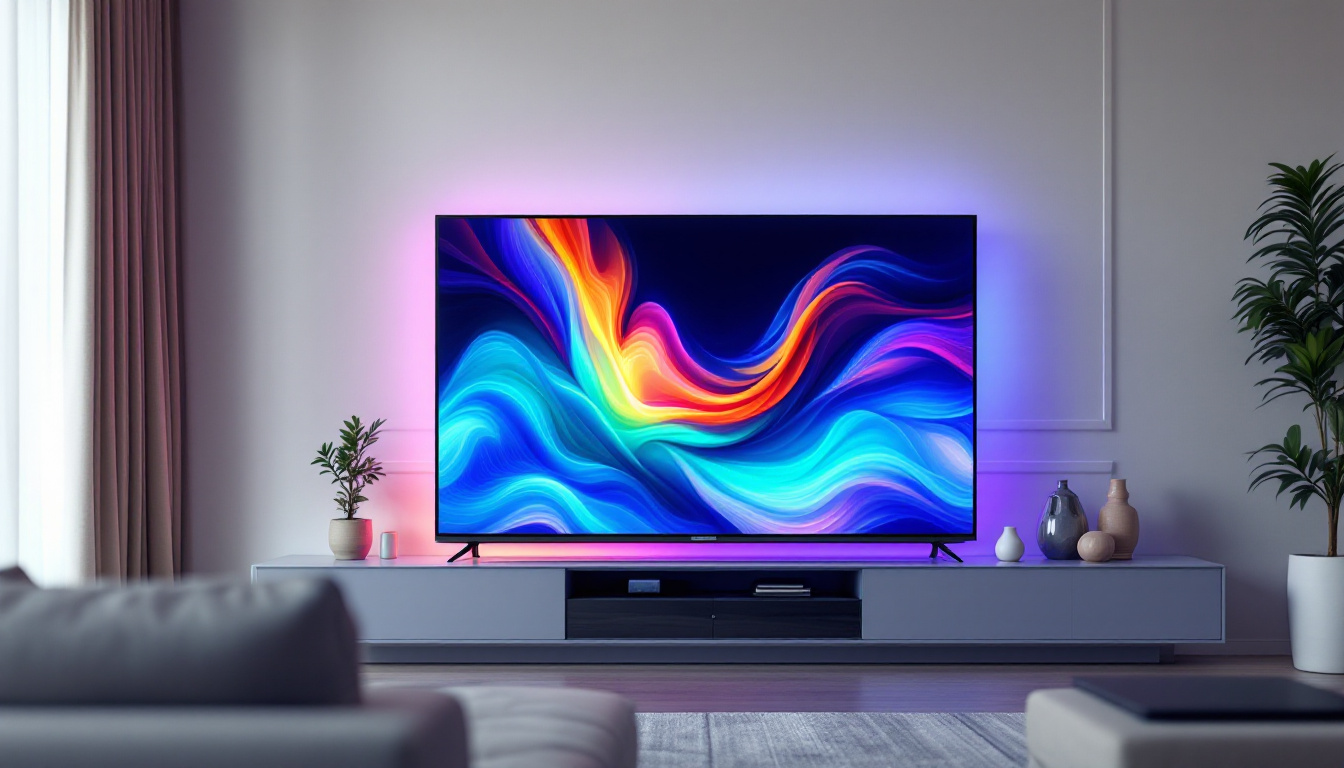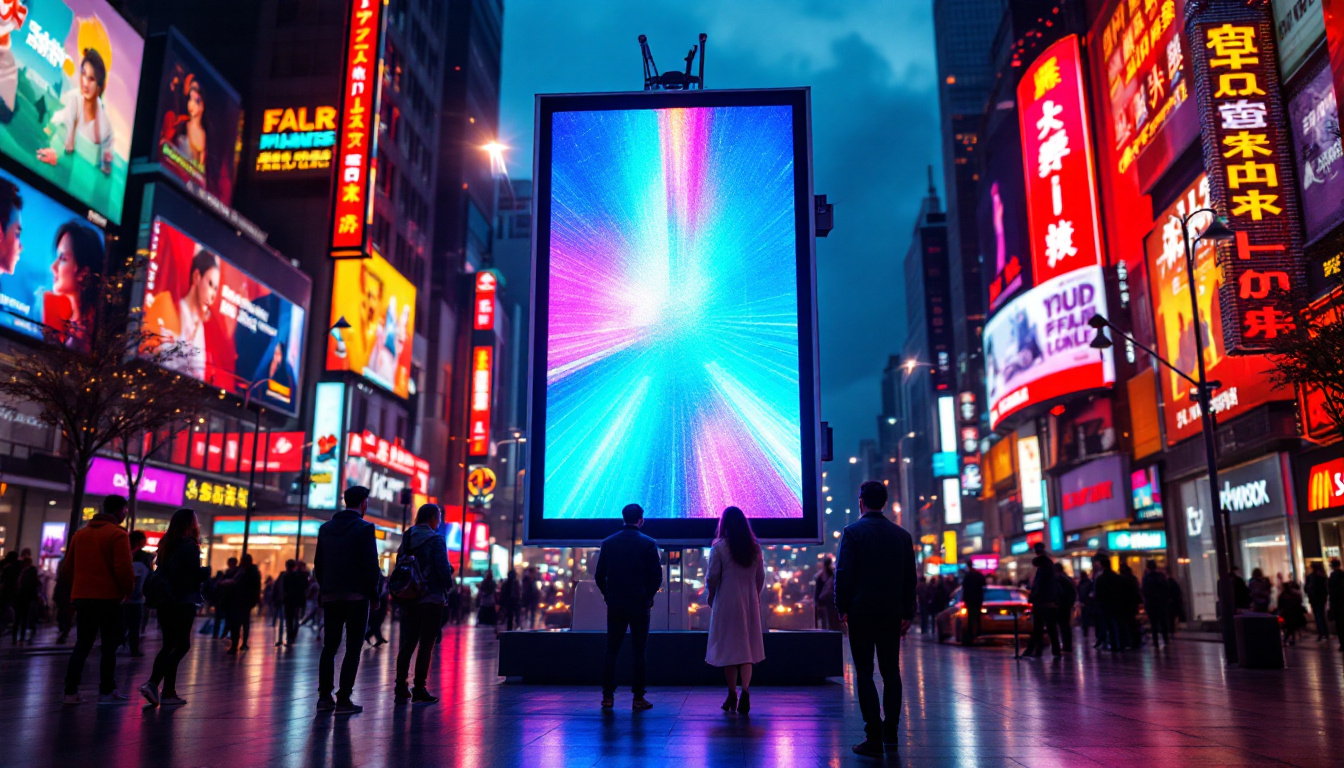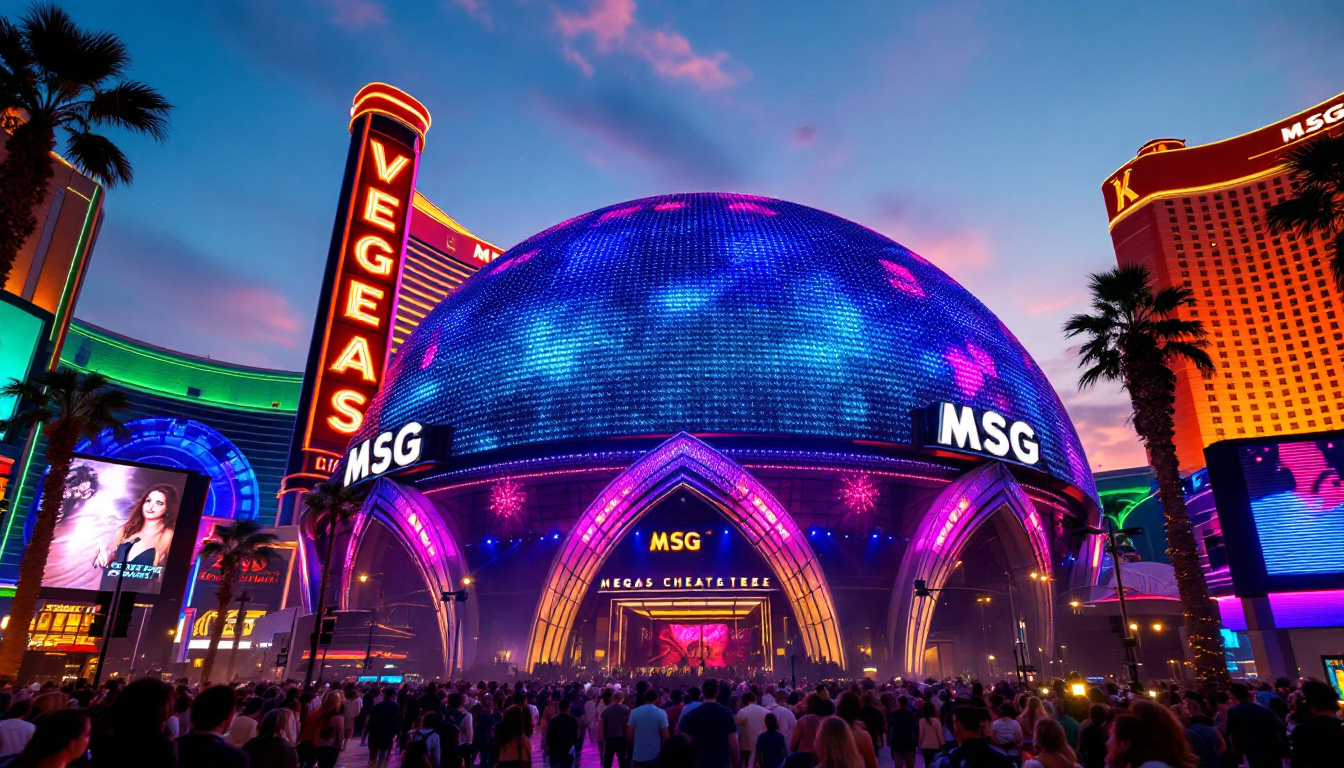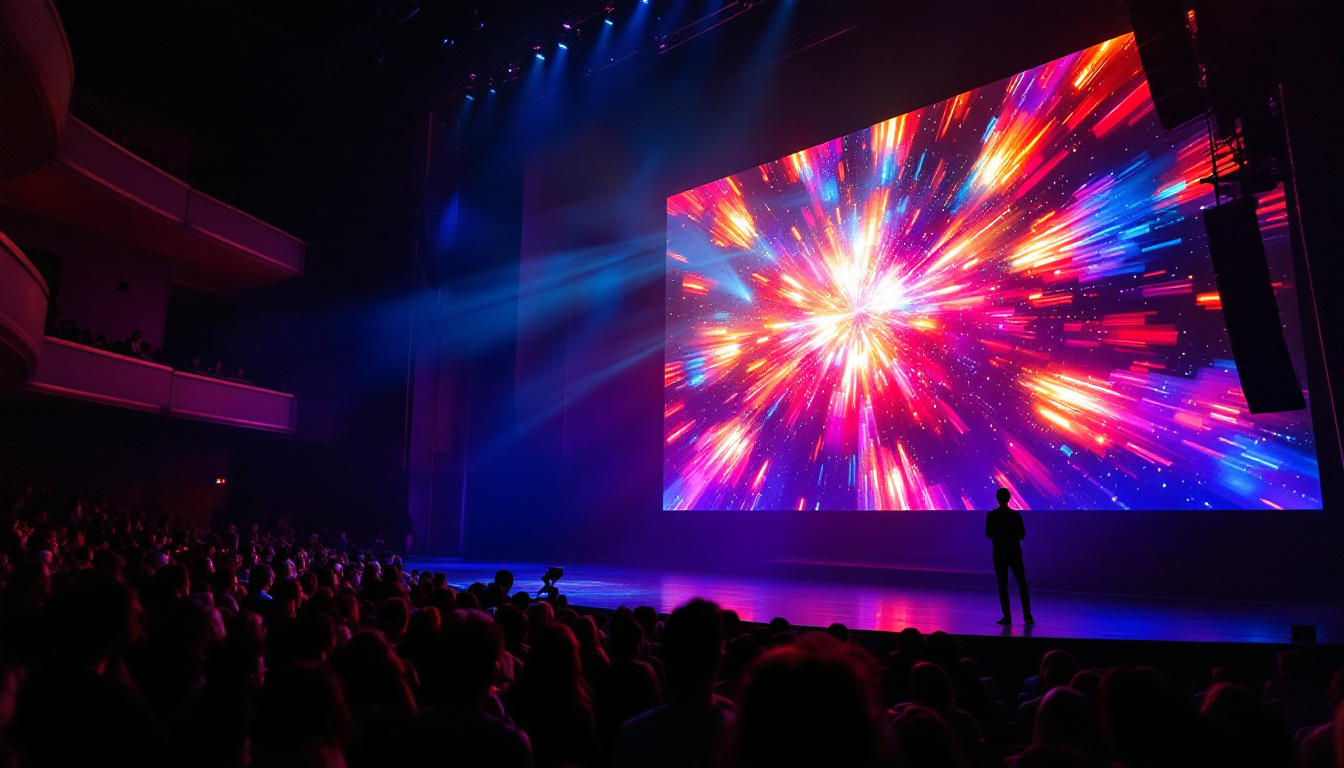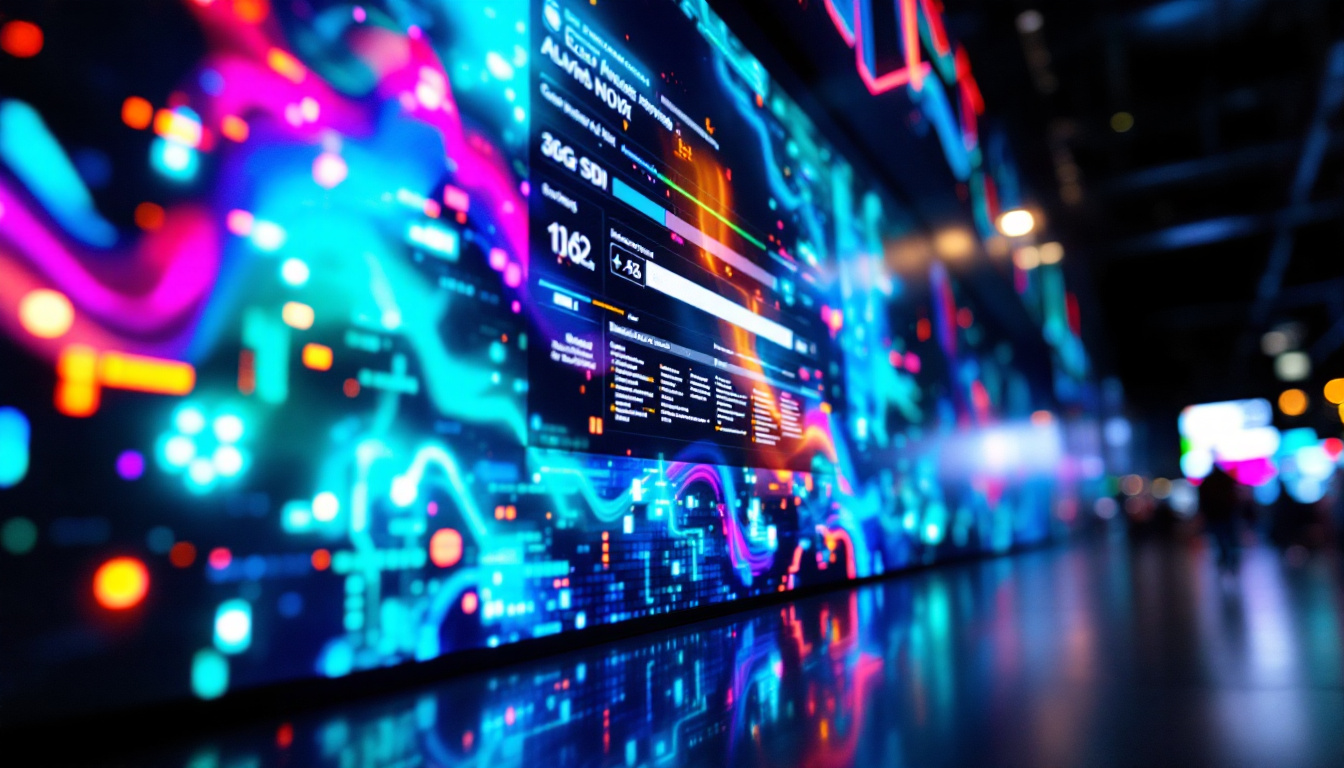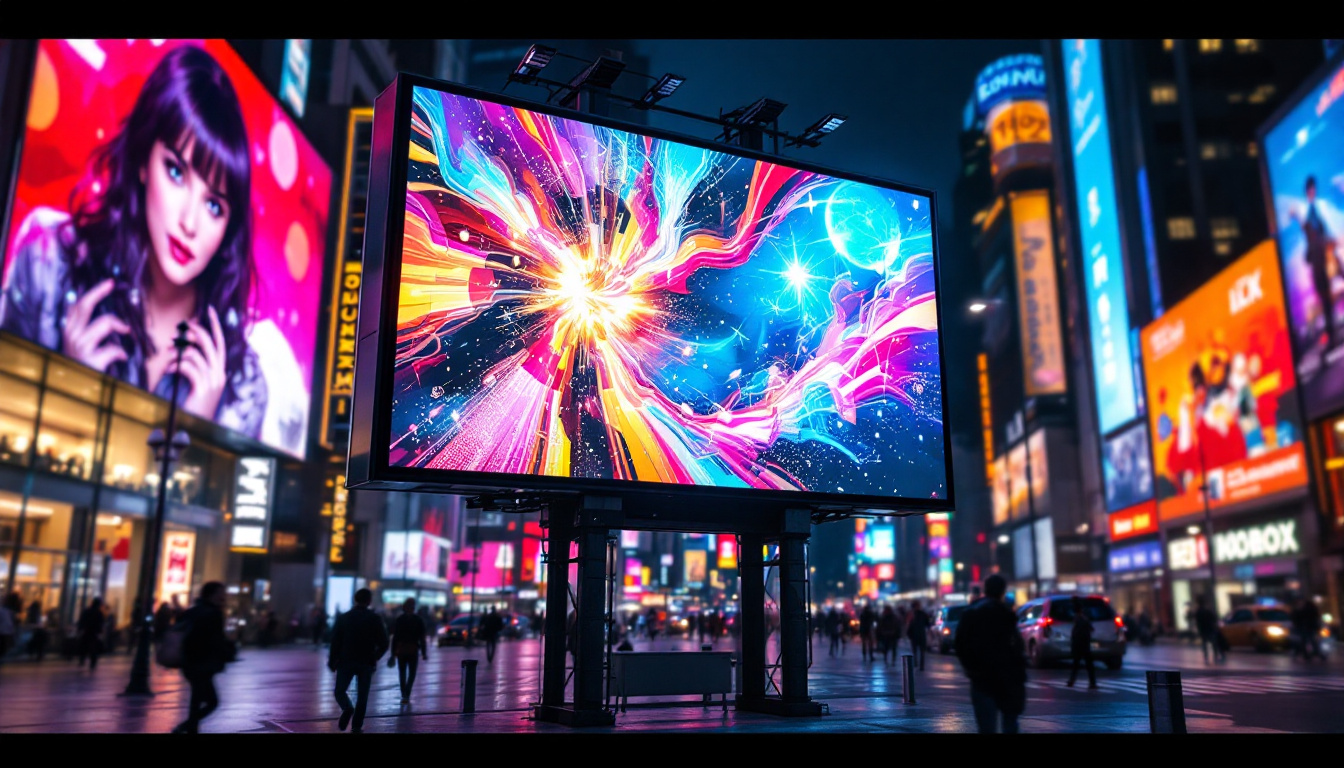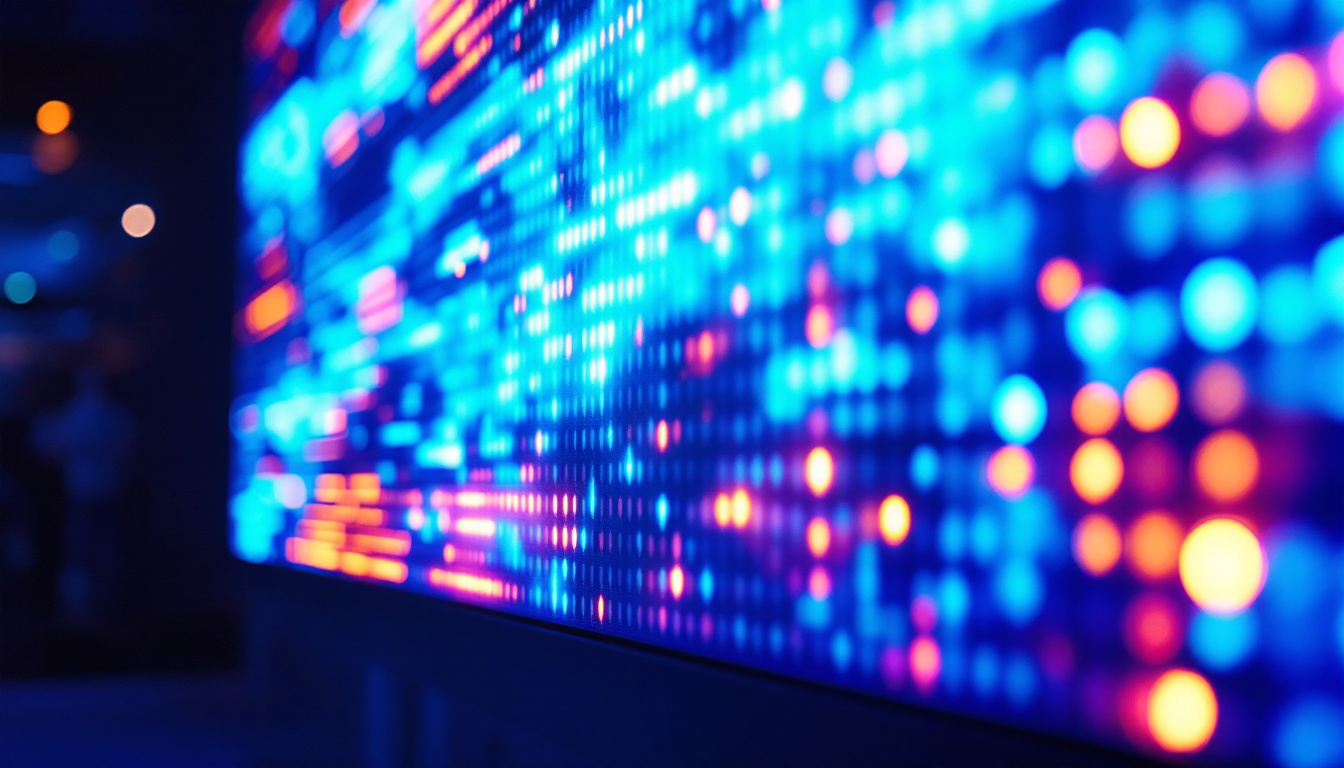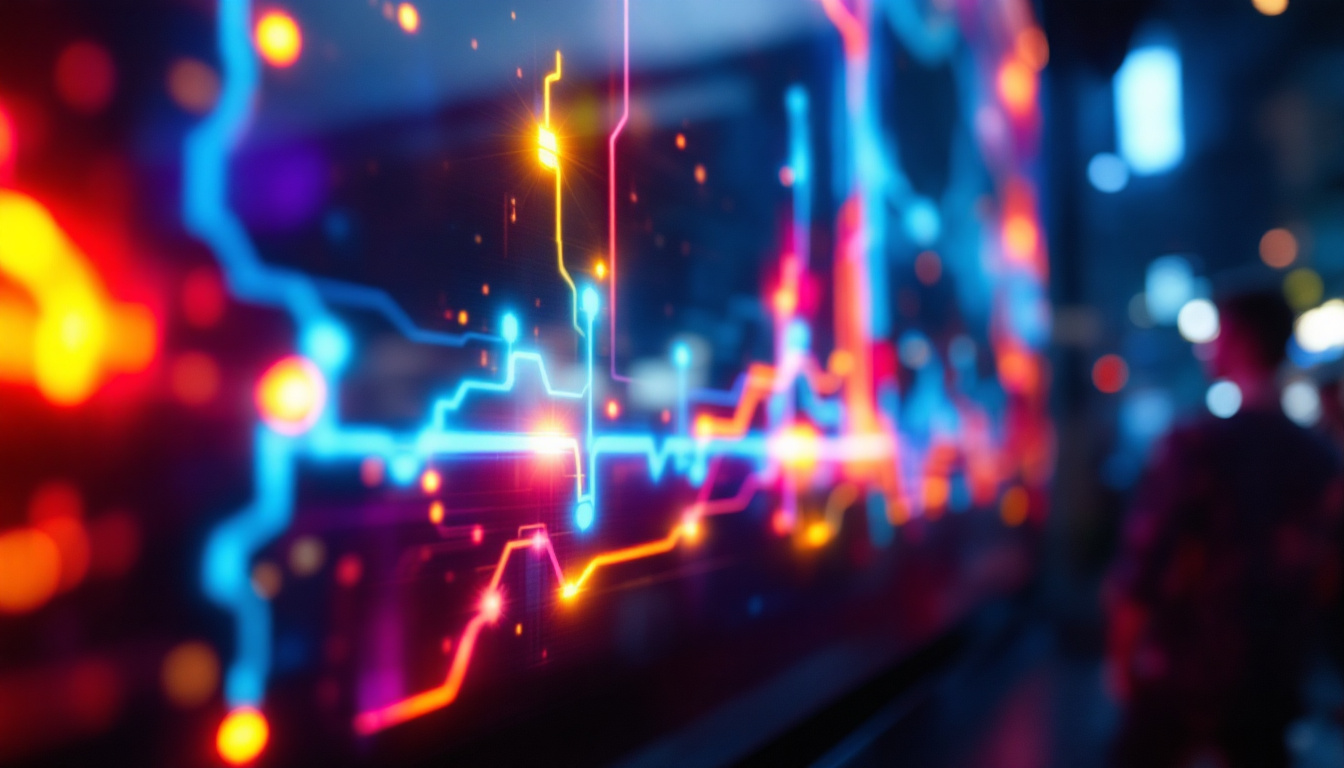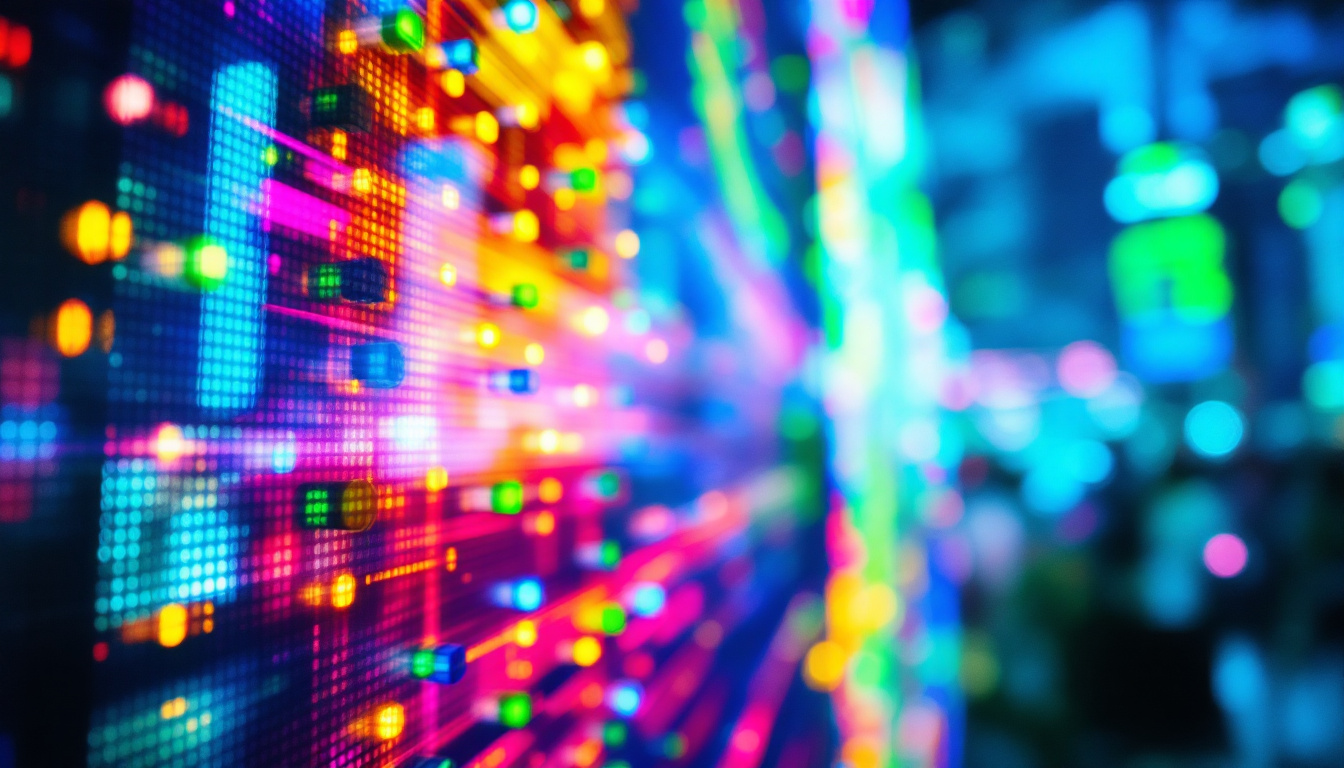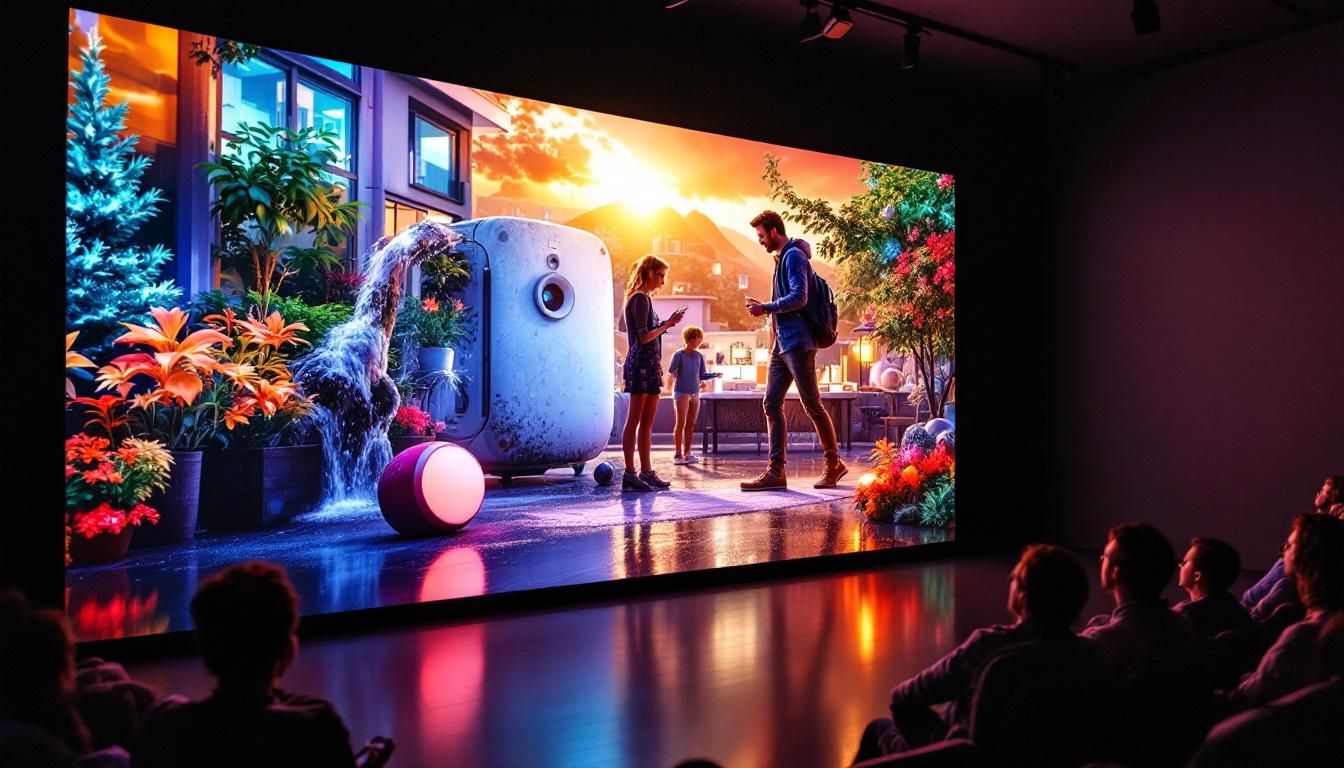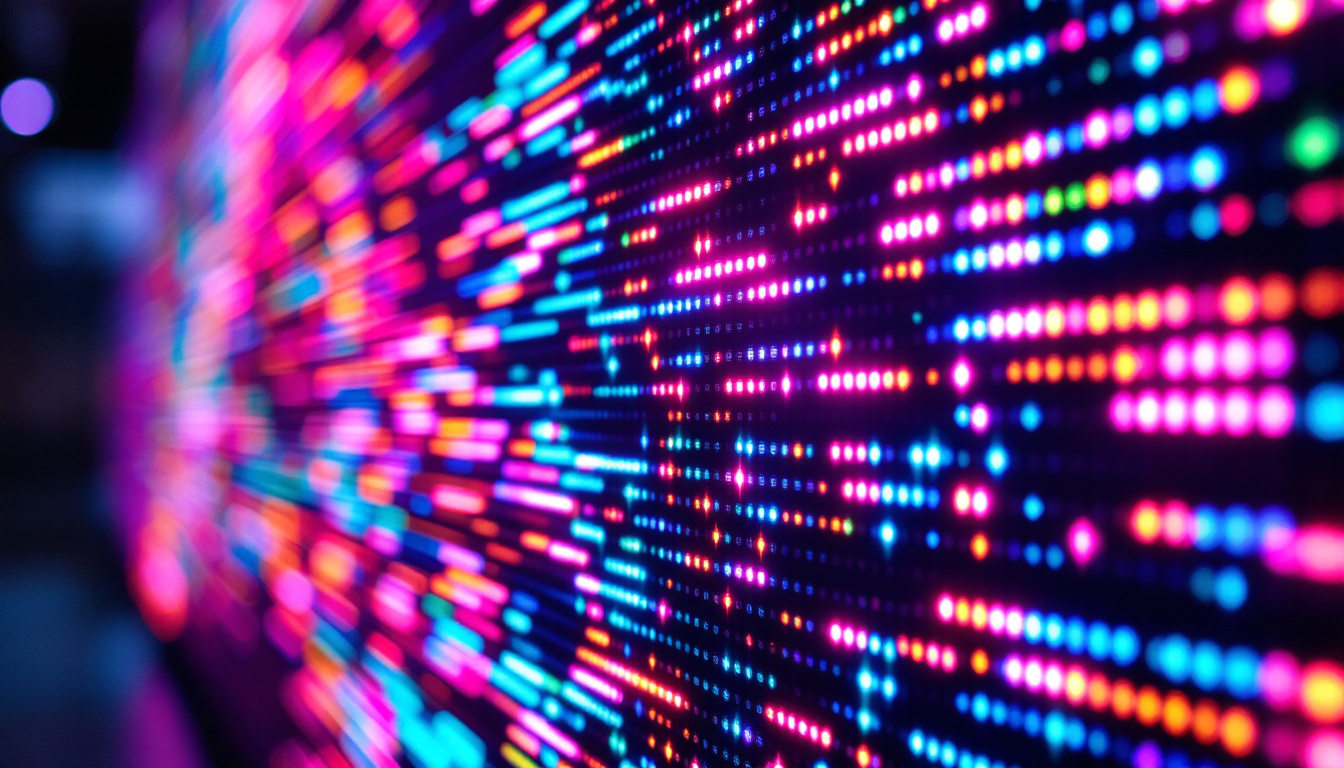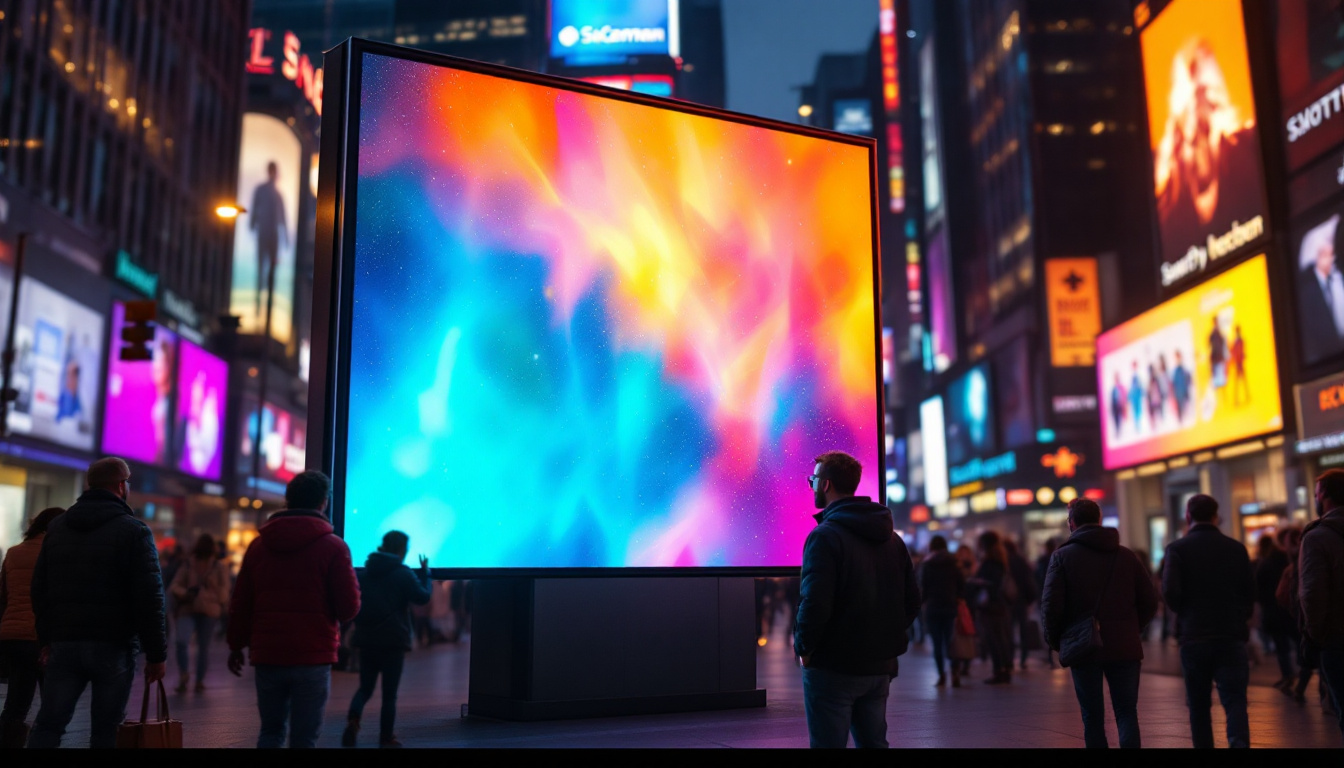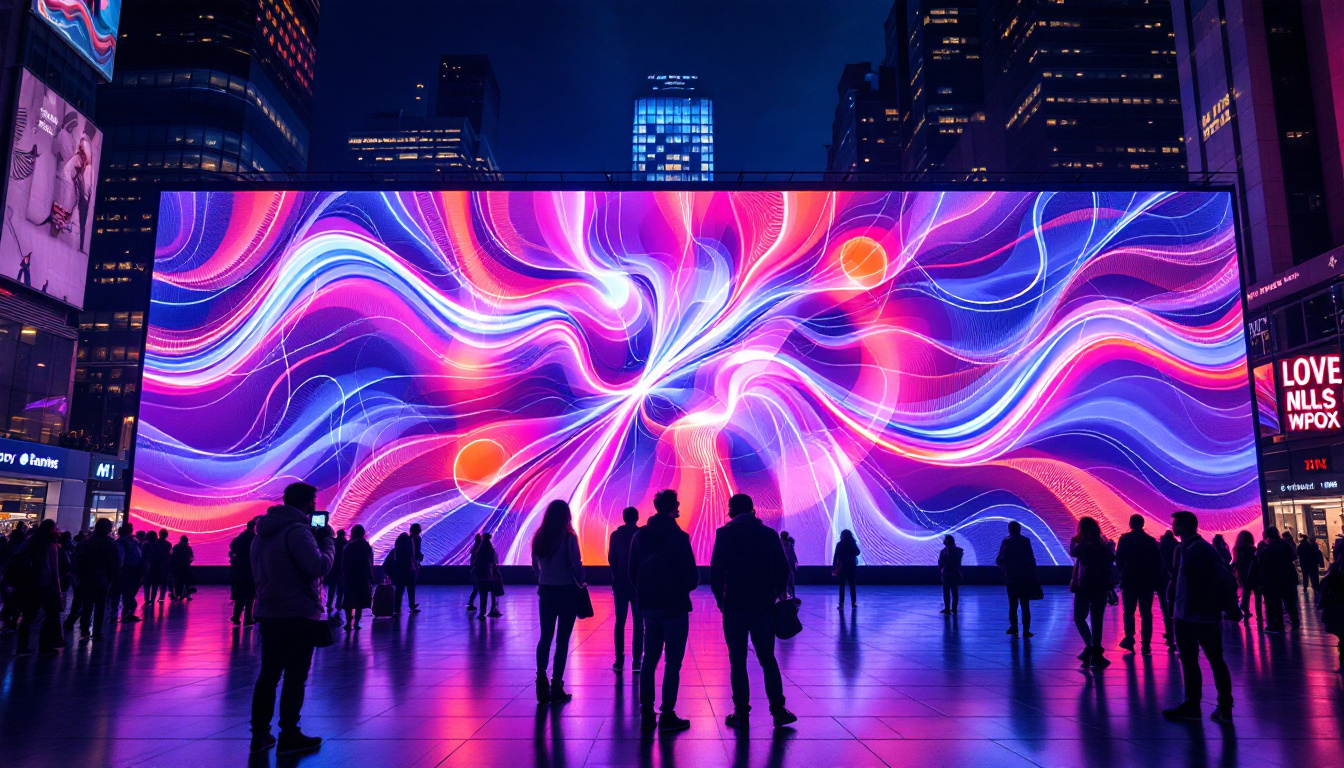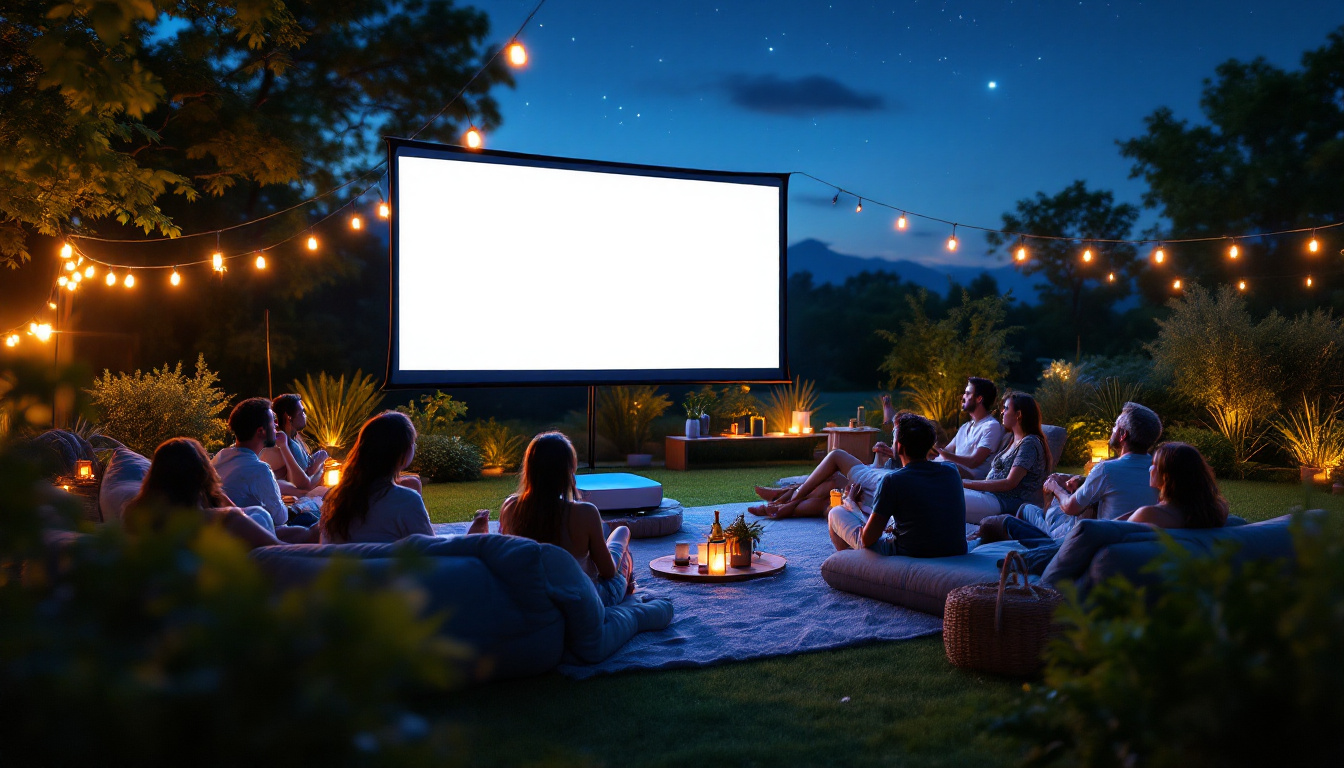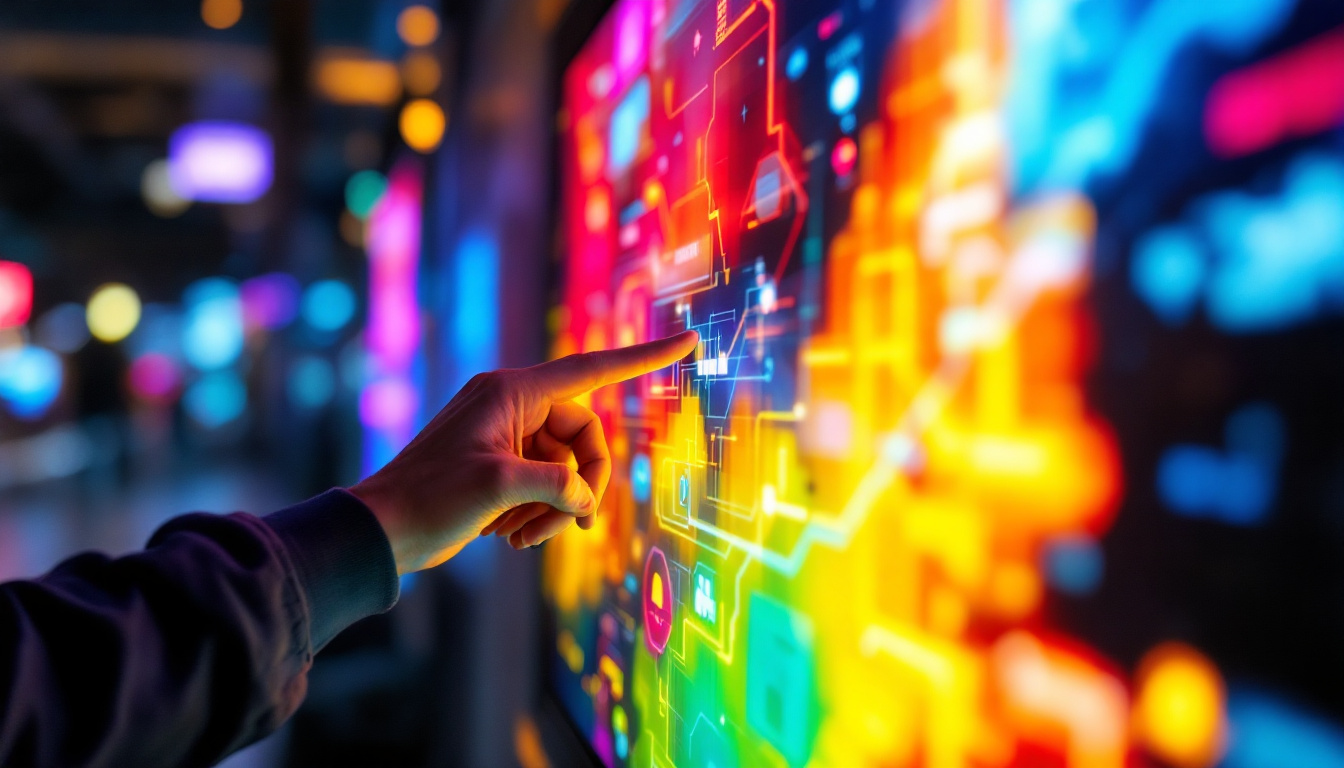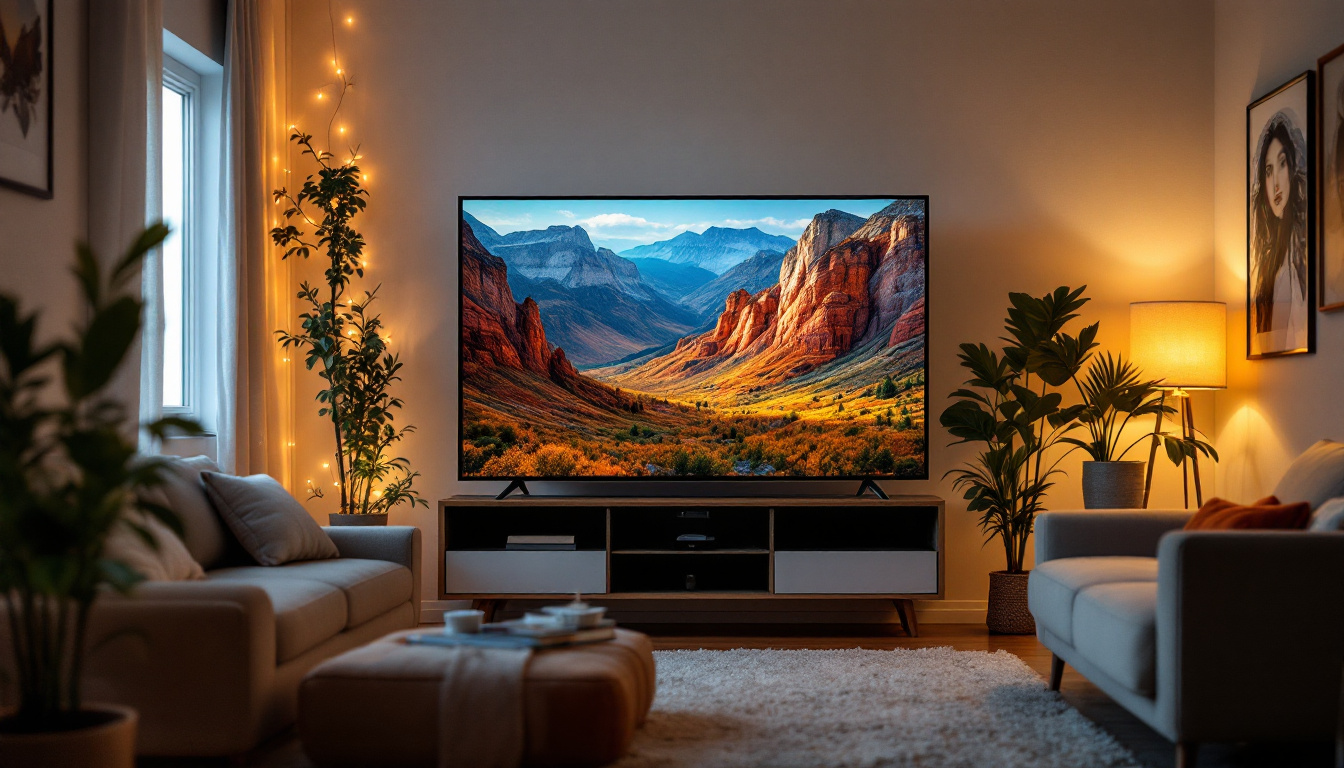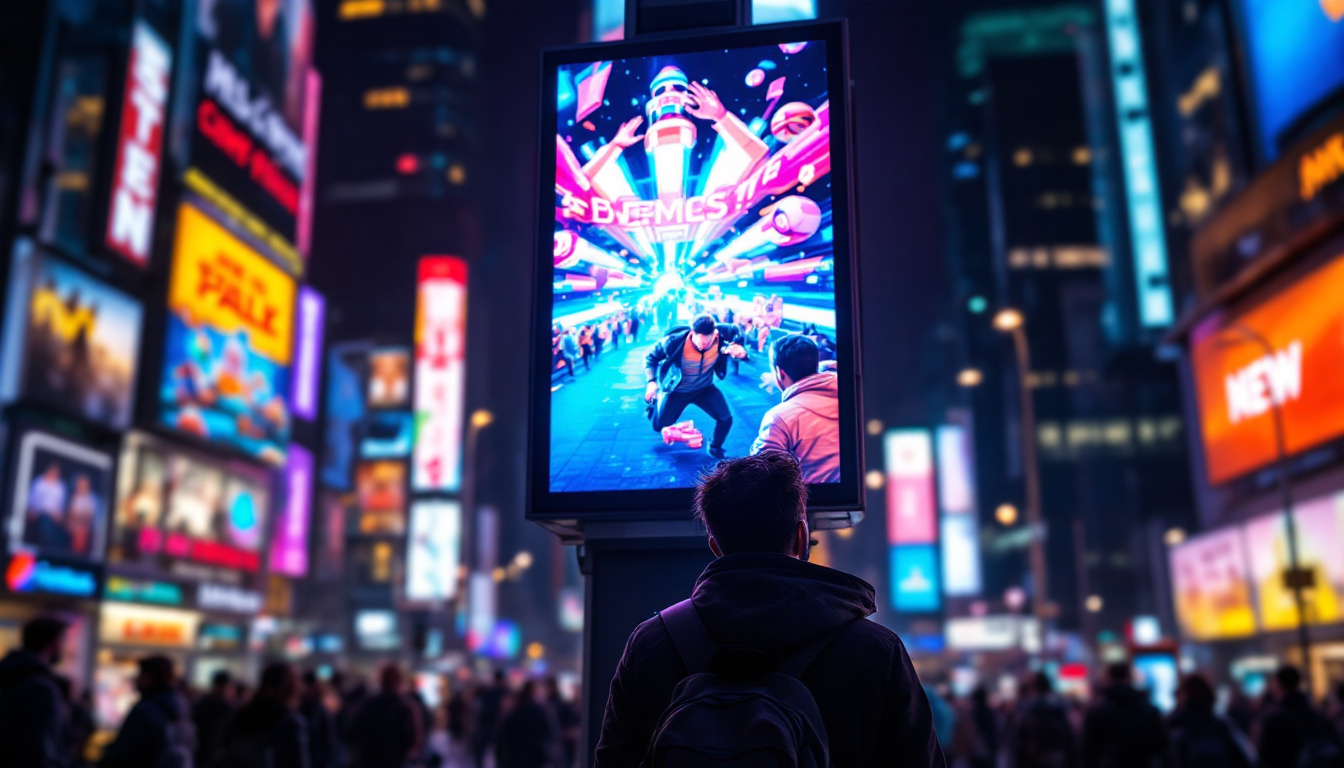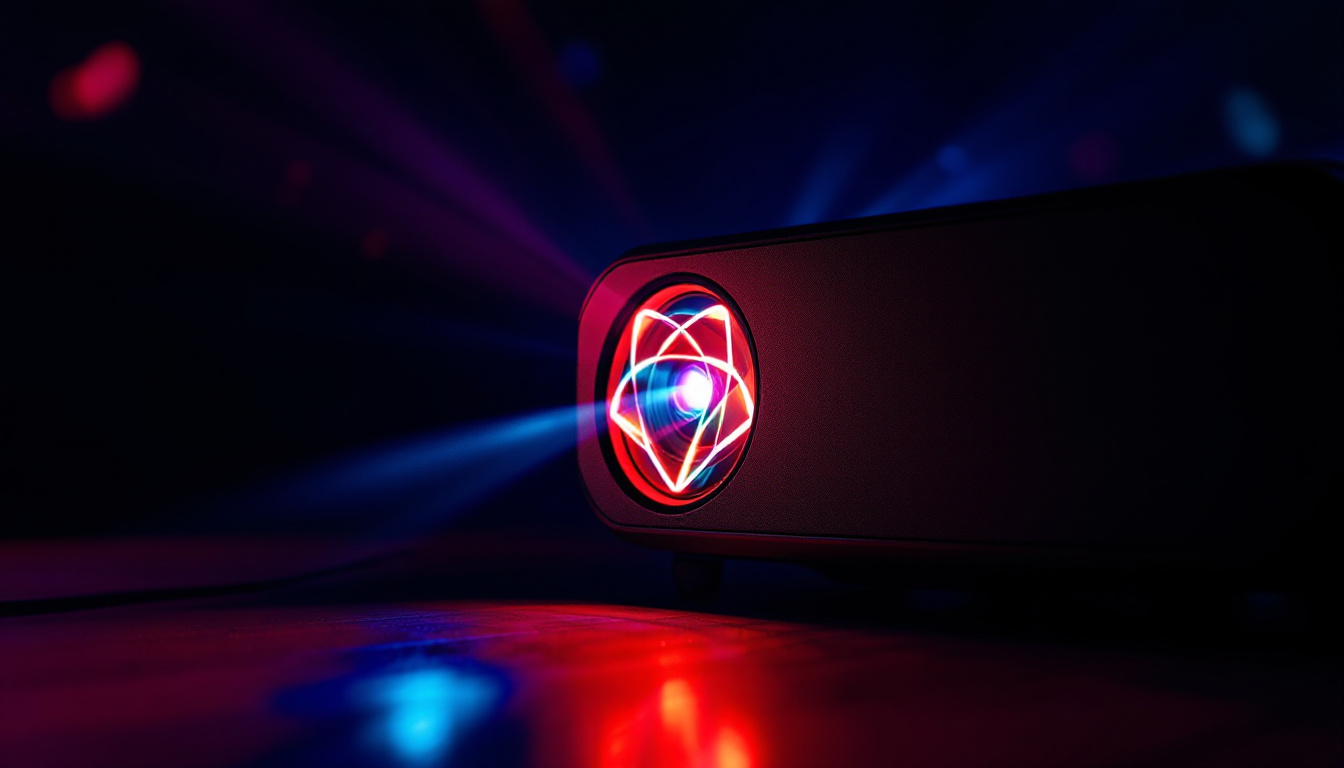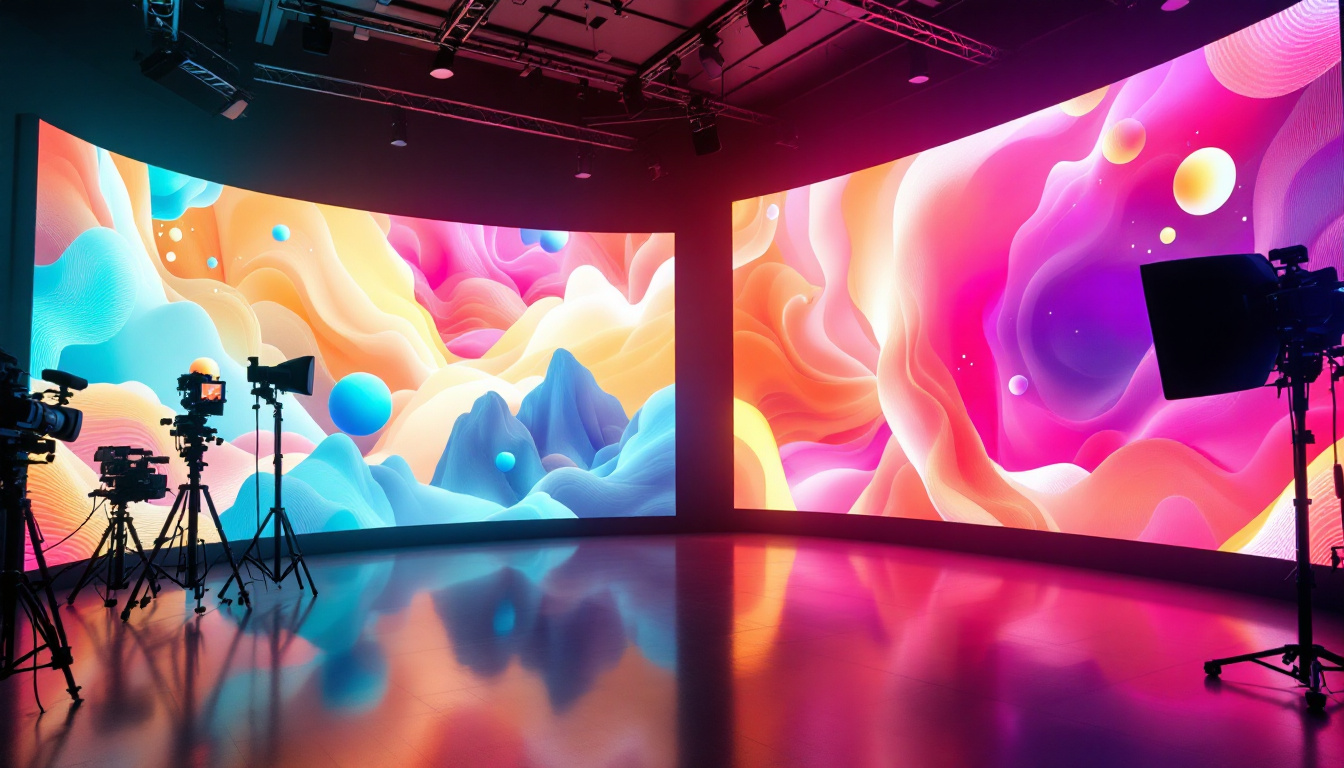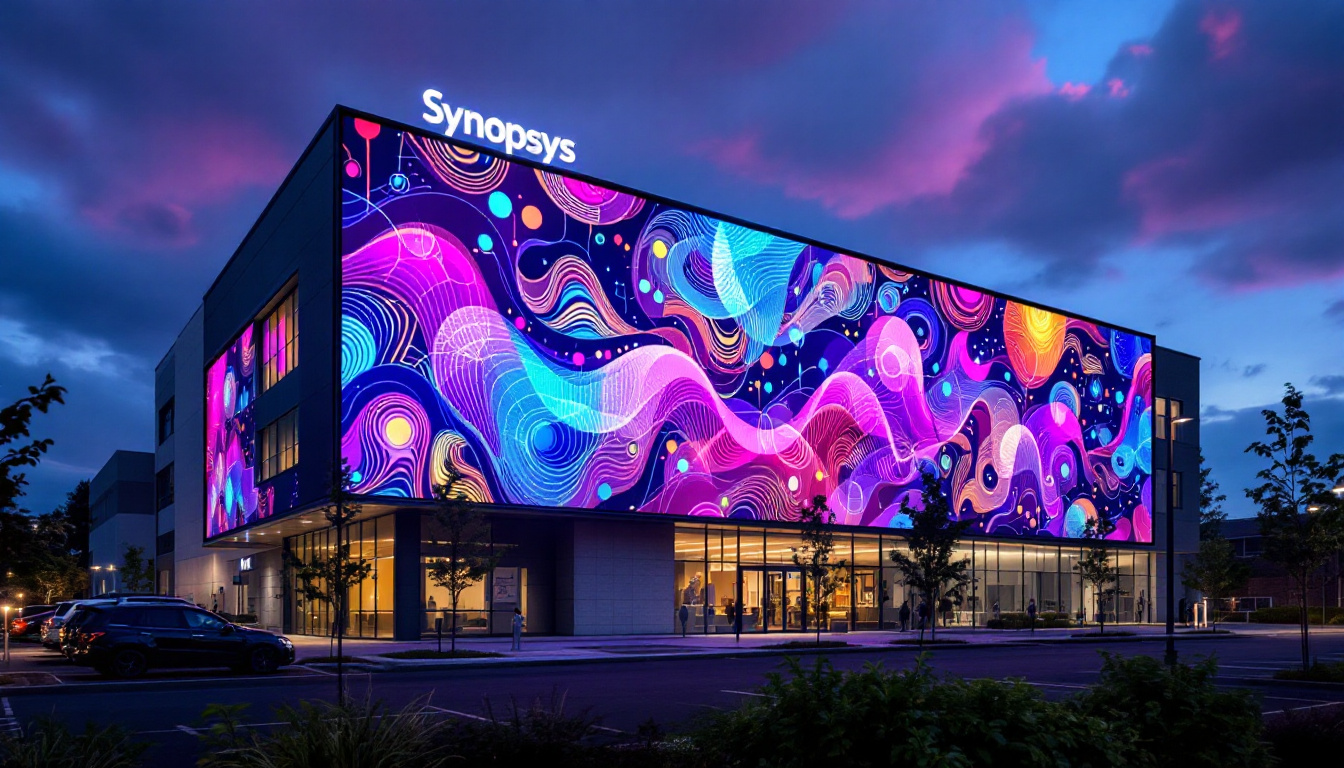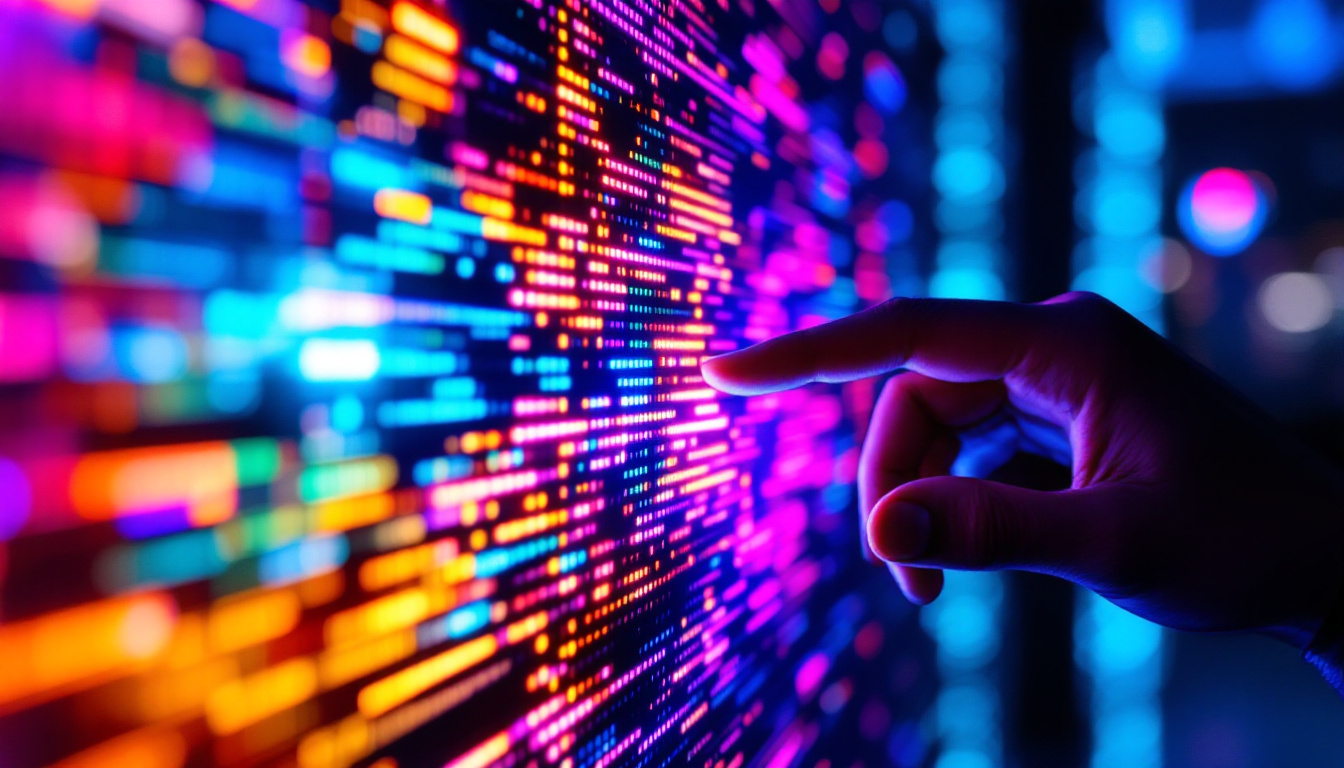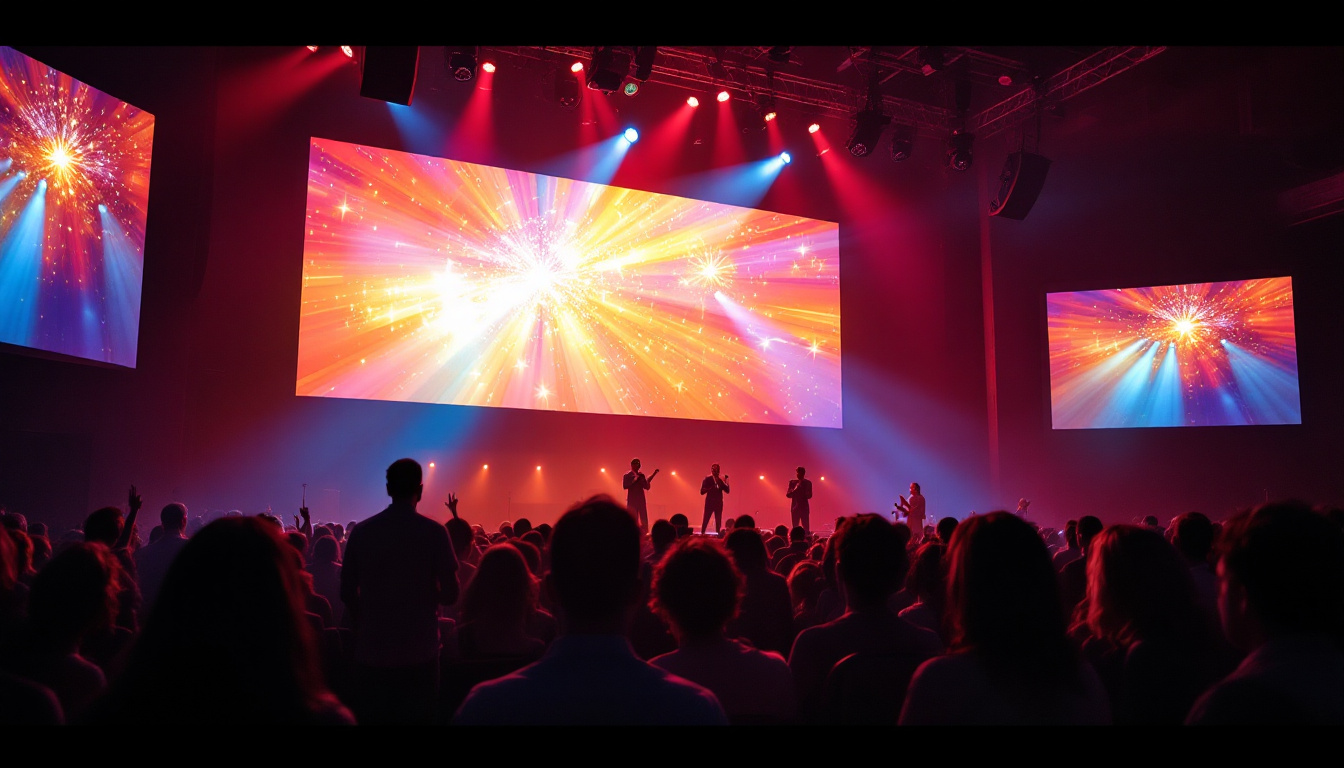In an age where technology seamlessly integrates with our daily lives, the concept of a television that doubles as a canvas for art has emerged as a groundbreaking innovation. LED displays, in particular, have transformed the way we perceive and interact with visual content. This article delves into the fascinating world of LED displays, exploring their functionality, advantages, and the unique role they play in displaying art.
Understanding LED Technology
Light Emitting Diode (LED) technology has revolutionized the display industry. Unlike traditional LCD screens that use fluorescent backlighting, LED displays utilize tiny diodes to produce light, resulting in brighter images and more vibrant colors. This advancement has not only enhanced the viewing experience but has also paved the way for innovative applications in various fields, from advertising to entertainment.
The Basics of LED Displays
LED displays consist of an array of pixels, each made up of red, green, and blue diodes. By adjusting the intensity of these diodes, a wide spectrum of colors can be achieved. This capability allows for high-definition images that are not only sharp but also rich in detail. Furthermore, the rapid response time of LEDs enables smoother motion rendering, which is particularly beneficial for video content, ensuring that fast-paced scenes are displayed without blurring or ghosting.
Moreover, LED technology is energy-efficient. Compared to older display technologies, LED screens consume less power, making them an environmentally friendly option. This efficiency is particularly beneficial for art displays, where the screen may be left on for extended periods without incurring significant energy costs. Additionally, the longevity of LED technology means that these displays can last tens of thousands of hours, reducing the need for frequent replacements and further contributing to sustainability efforts.
Types of LED Displays
There are several types of LED displays, each designed for specific applications. The most common types include:
- Direct View LED: These displays are composed of individual LED modules that create a larger screen. They are often used for large-scale installations, such as billboards and digital signage. Their modular nature allows for flexibility in size and shape, making them ideal for creative and dynamic advertising solutions.
- LED-backlit LCD: This type combines traditional LCD technology with LED backlighting. It is commonly found in televisions and computer monitors. The backlighting enhances color reproduction and contrast ratios, offering viewers a more immersive experience while watching movies or playing video games.
- Organic LED (OLED): OLED displays use organic compounds to emit light. They offer superior contrast and color accuracy, making them ideal for displaying art. The ability of OLEDs to achieve true blacks, as each pixel can be turned off individually, creates stunning visuals that are particularly appealing in dark environments.
In addition to these common types, newer innovations such as MicroLED and MiniLED technologies are emerging, promising even greater performance and efficiency. MicroLED, for example, utilizes microscopic LEDs to create self-emissive displays that can achieve incredible brightness levels and energy efficiency. This technology is still in its infancy but holds great potential for future applications in both consumer electronics and professional displays.
The Role of LED Displays in Art
As technology advances, the intersection of art and display technology becomes increasingly significant. LED displays provide artists and collectors with innovative ways to showcase their work, transforming traditional art presentations.
Art as a Dynamic Experience
One of the most compelling aspects of using LED displays for art is the ability to create a dynamic viewing experience. Unlike static paintings or photographs, digital art can change and evolve. Artists can program their works to shift in color, form, and even movement, captivating viewers in ways that traditional media cannot.
This dynamic nature not only enhances the aesthetic appeal but also invites interaction. Viewers can engage with the art, experiencing it differently each time they encounter it. This interactivity fosters a deeper connection between the artwork and the audience, making art more accessible and engaging.
Furthermore, the incorporation of sound and light in LED displays can elevate the sensory experience, allowing artists to create immersive environments that transport viewers into different realms. For instance, a simple landscape can transform into a vibrant, animated scene that reacts to the viewer’s presence, creating a personalized experience that resonates on multiple levels. This fusion of technology and creativity opens up new avenues for storytelling, enabling artists to convey complex narratives that evolve over time.
Curating Digital Art Collections
LED displays allow collectors to curate digital art collections that can be easily updated and modified. Instead of investing in physical pieces that require space and maintenance, collectors can display a rotating selection of artworks on a single screen. This flexibility is particularly appealing for those who wish to showcase a variety of styles or themes without the constraints of traditional framing and hanging.
Moreover, digital art can be sourced from a global pool of artists, providing collectors with diverse options. This democratization of art access encourages emerging artists to share their work, fostering a vibrant artistic community.
In addition, the ability to integrate social media and online platforms into LED displays allows collectors to share their collections with a broader audience. By showcasing works on digital platforms, collectors can engage with art enthusiasts worldwide, sparking conversations and collaborations that transcend geographical boundaries. This connectivity not only enriches the collector’s experience but also promotes a culture of sharing and appreciation for digital art, paving the way for future innovations in the art world.
Advantages of Using LED Displays for Art
Utilizing LED displays for art comes with numerous advantages that enhance both the viewing experience and the practicality of art display.
High-Quality Visuals
One of the most significant benefits of LED displays is their ability to deliver high-quality visuals. The brightness and contrast levels of LED screens enable artworks to be displayed with stunning clarity. Colors appear more vivid, and details are sharper, allowing viewers to appreciate the intricacies of each piece.
This high-quality visual output is particularly crucial for art exhibitions, where the goal is to showcase the artist’s vision in the best possible light. LED displays can reproduce colors accurately, ensuring that the artwork is presented as intended.
Space Efficiency
For galleries, homes, or offices with limited wall space, LED displays offer a space-efficient solution for displaying art. A single screen can host multiple artworks, rotating through them at set intervals or allowing viewers to select their preferred pieces. This versatility is particularly beneficial in urban environments where space is at a premium.
Additionally, the ability to display digital art means that there is no need for physical storage or maintenance of artworks, further optimizing space usage. This practicality makes LED displays a popular choice for both art institutions and private collectors.
Challenges and Considerations
While LED displays offer numerous advantages for displaying art, there are also challenges and considerations to keep in mind.
Initial Investment
One of the primary challenges associated with LED displays is the initial investment. High-quality LED screens can be expensive, and the cost may be a barrier for some artists and collectors. However, as technology advances, prices are gradually decreasing, making these displays more accessible over time.
It is essential to weigh the long-term benefits of LED displays against the initial costs. For many, the ability to showcase art dynamically and efficiently justifies the investment.
Artistic Limitations
While digital art offers exciting possibilities, it also presents limitations. Traditional mediums such as oil painting or sculpture provide tactile experiences that digital displays cannot replicate. Artists may need to adapt their work for the digital format, which may not align with their creative vision.
Furthermore, the experience of viewing art on a screen differs from that of seeing it in person. The emotional impact of physical art can be challenging to replicate digitally, and some art enthusiasts may prefer traditional forms of display.
Future Trends in Art Displays
As technology continues to evolve, the future of art displays looks promising. Several trends are emerging that may shape the way art is showcased in the coming years.
Integration of Augmented Reality
Augmented reality (AR) is poised to revolutionize the art world. By combining LED displays with AR technology, artists can create immersive experiences that allow viewers to interact with their work in unprecedented ways. Imagine walking through a gallery where digital elements enhance physical artworks, providing context and depth.
This integration could redefine how audiences engage with art, making it more interactive and educational. AR could also facilitate remote viewing experiences, allowing people to explore exhibitions from anywhere in the world.
Personalization and Customization
As LED technology advances, the potential for personalization and customization of art displays will grow. Future displays may allow users to curate their art collections based on their preferences, creating a unique viewing experience tailored to individual tastes.
This level of customization could also extend to the artwork itself. Artists may develop pieces that adapt to their surroundings, changing colors or themes based on the viewer’s mood or the time of day. Such innovations could lead to a more intimate and engaging relationship between art and its audience.
Conclusion
The emergence of LED displays as a medium for showcasing art has transformed the way we experience and interact with visual content. With their high-quality visuals, space efficiency, and dynamic capabilities, LED displays offer exciting possibilities for artists and collectors alike. While challenges exist, the potential for innovation in this space is vast.
As technology continues to evolve, the integration of augmented reality and personalized experiences will further enhance the role of LED displays in the art world. The future is bright for art displayed on LED screens, promising to captivate audiences and redefine the boundaries of artistic expression.
In this ever-changing landscape, embracing the fusion of technology and art is essential for artists, collectors, and enthusiasts. As LED displays become more commonplace, they will undoubtedly play a pivotal role in shaping the future of art presentation.
Discover the Art of Visual Brilliance with LumenMatrix
As you contemplate the future of art and technology, consider the transformative power of LED displays. LumenMatrix stands at the forefront of this evolution, offering an array of innovative LED display solutions that bring your visual content to life. From the immersive Indoor LED Wall Display to the dynamic Outdoor LED Wall Display, and from the versatile Vehicle LED Display to the sleek LED Poster Display, our products are designed to revolutionize visual communication. Whether it’s for sports, flooring, custom needs, or an all-in-one solution, our mission is to captivate your audience with unparalleled clarity and impact. Don’t just display art—elevate it. Check out LumenMatrix LED Display Solutions and join the vanguard of digital art presentation.

